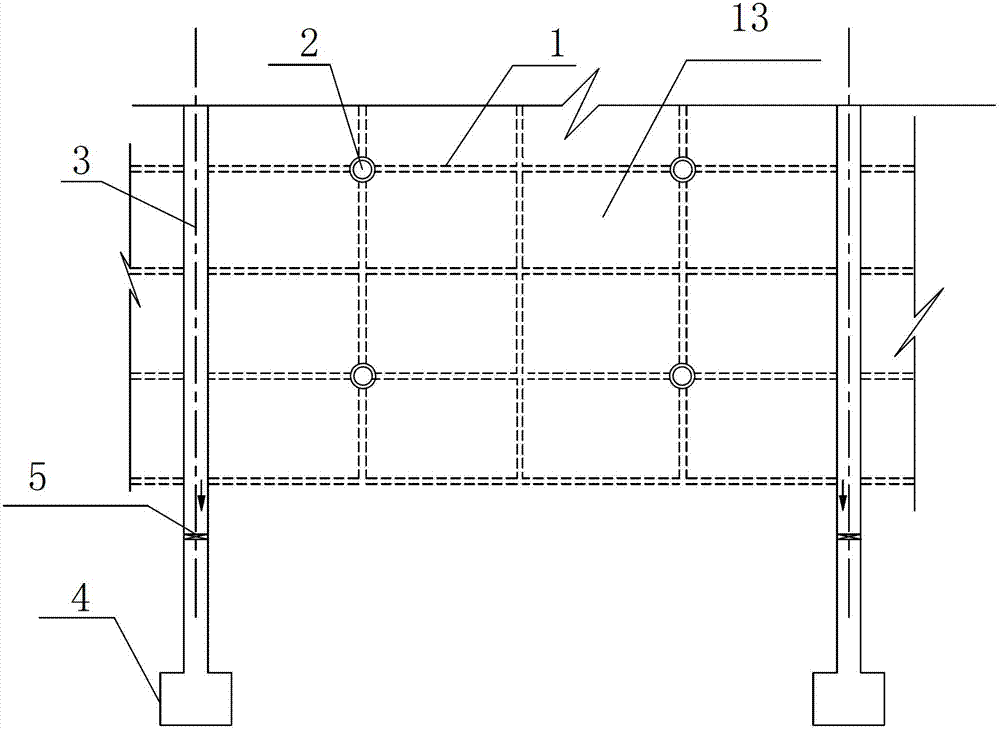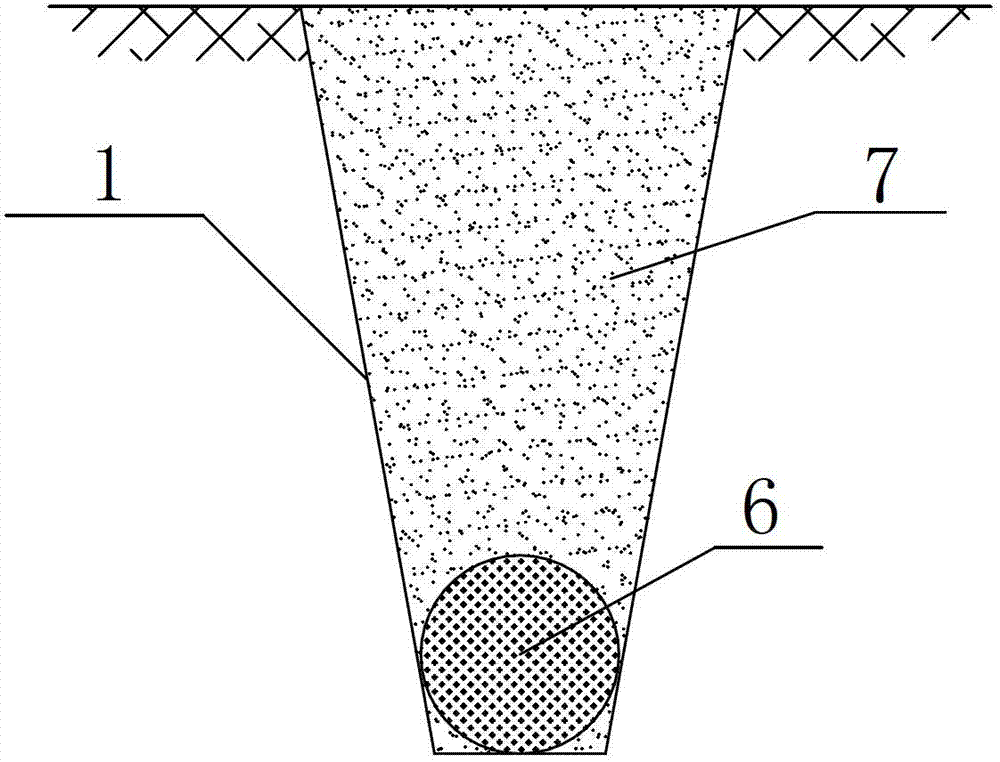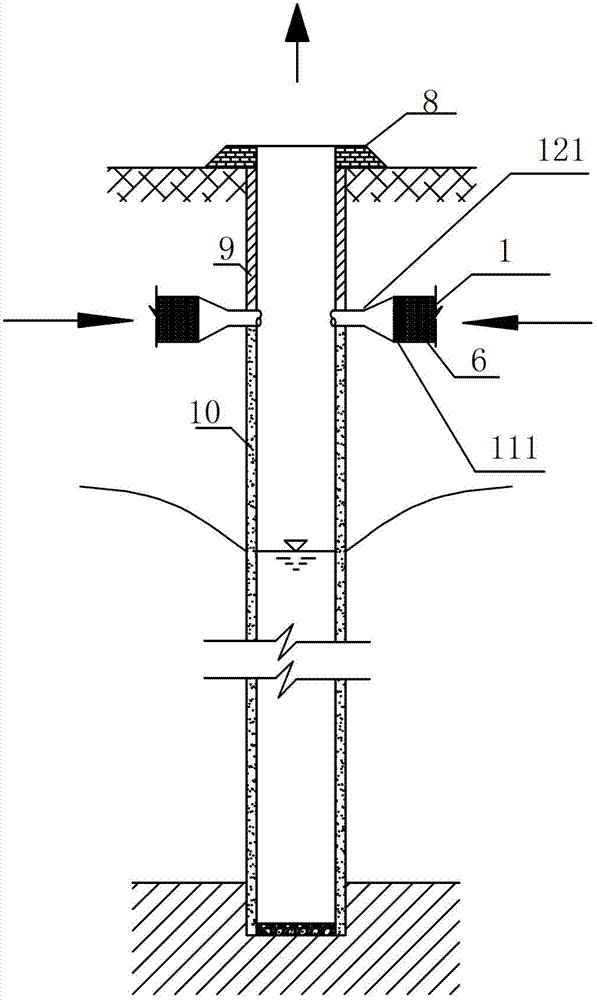Combined draining and saline controlling system for saline and alkaline land
A saline-alkali land and underground drainage technology, which is applied in soil drainage, construction, application, etc., can solve the problems of high project cost and large one-time investment, and achieve the effect of reducing the excavation area, facilitating construction, and promoting high-efficiency agricultural production
- Summary
- Abstract
- Description
- Claims
- Application Information
AI Technical Summary
Problems solved by technology
Method used
Image
Examples
Embodiment Construction
[0021] Below in conjunction with accompanying drawing and specific embodiment, further illustrate the present invention, should be understood that these embodiments are only for illustrating the present invention and are not intended to limit the scope of the present invention, after having read the present invention, those skilled in the art will understand various aspects of the present invention Modifications in equivalent forms all fall within the scope defined by the appended claims of this application.
[0022] see figure 1 , figure 2 , image 3 and Figure 4 As shown, a compound drainage and salt control system for saline-alkali land of the present invention includes an underground drainage ditch 1, a water collection well 2, a ground drainage ditch 3, a reservoir 4, an in-ditch control gate 5 and a water pump. The underground drainage ditches 1 are arranged in the farmland 13 in a criss-cross pattern. Wherein, the section of the underground drainage ditch 1 is a t...
PUM
| Property | Measurement | Unit |
|---|---|---|
| Depth | aaaaa | aaaaa |
Abstract
Description
Claims
Application Information
 Login to View More
Login to View More - R&D
- Intellectual Property
- Life Sciences
- Materials
- Tech Scout
- Unparalleled Data Quality
- Higher Quality Content
- 60% Fewer Hallucinations
Browse by: Latest US Patents, China's latest patents, Technical Efficacy Thesaurus, Application Domain, Technology Topic, Popular Technical Reports.
© 2025 PatSnap. All rights reserved.Legal|Privacy policy|Modern Slavery Act Transparency Statement|Sitemap|About US| Contact US: help@patsnap.com



